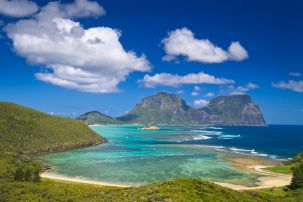These resources are part of the Lord Howe Island Education Resources.
This Science unit for Years 7 - 10, Conservation and Speciation, has been designed to
- examine the ecological impact of introduced species on Australian ecosystems through real-world case studies, including the unique challenges faced by Lord Howe Island
- investigate successful conservation efforts, such as Lord Howe Island’s rodent eradication program, and analyse the importance of community-led stewardship in achieving long-term environmental outcomes
- explore the biological processes of evolution and speciation, using Lord Howe Island as a living example of allopatric and sympatric speciation in action
- develop students’ understanding of how natural selection shapes the traits of a population through engaging simulations and interactive modelling activities
- encourage critical and creative thinking as students evaluate environmental challenges, design public awareness campaigns, and predict evolutionary outcomes for organisms adapting to new environments
- build persuasive communication skills through tasks such as writing letters and creating posters to inspire community action and promote biodiversity conservation
By connecting scientific concepts with authentic conservation case studies, this unit empowers students to apply their knowledge of evolution and ecology to real-world environmental issues.
Scroll down to explore each lesson or click the download button on the right-hand side of this unit to download the entire unit at once. ✨



Welcome back!
Don't have an account yet?
Log in with:
Create your free Cool.org account.
Many of our resources are free, with an option to upgrade to Cool+ for premium content.
Already have an account?
Sign up with:
By signing up you accept Cool.org's Terms and Conditions(Opens in new tab) and Privacy Policy(Opens in new tab).